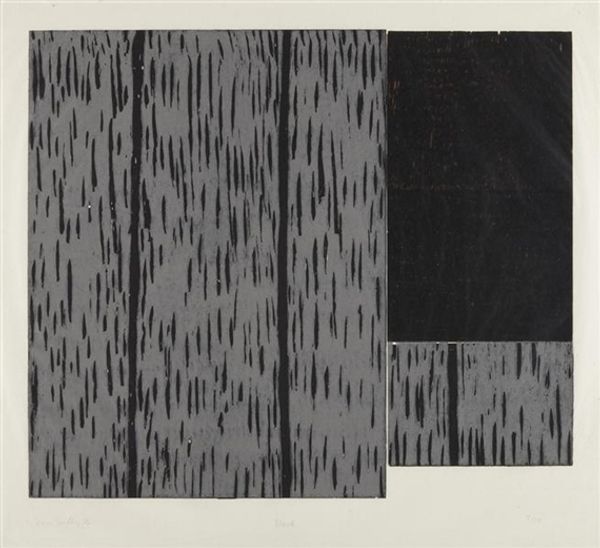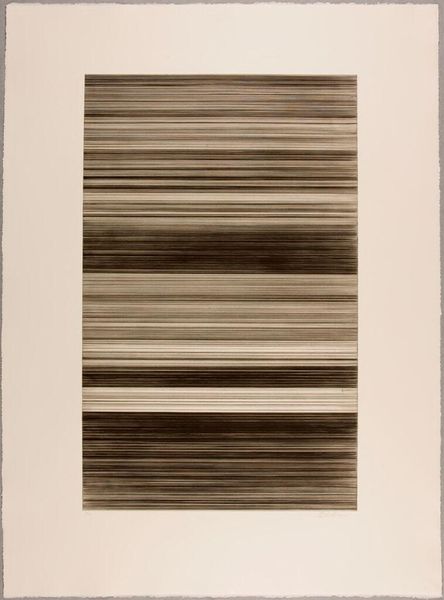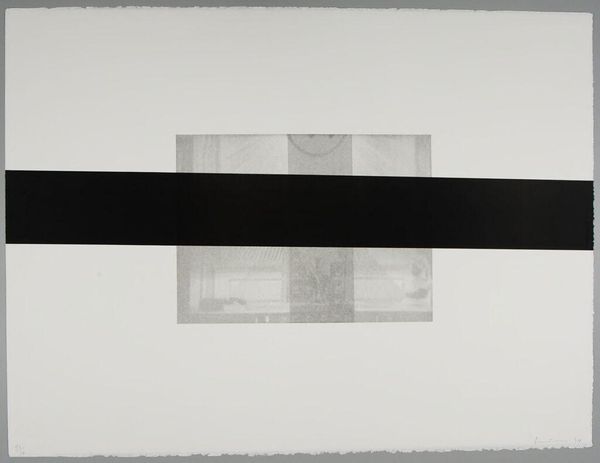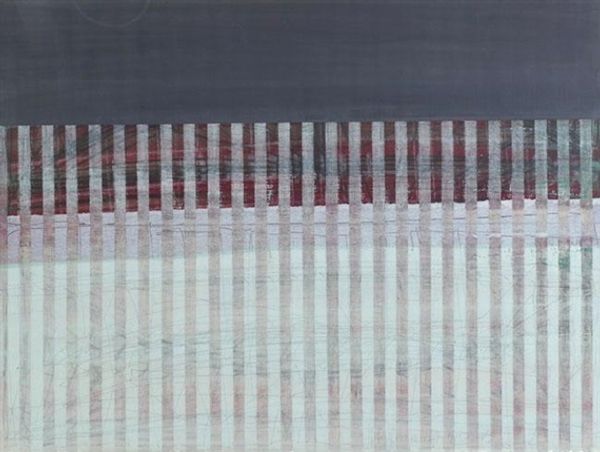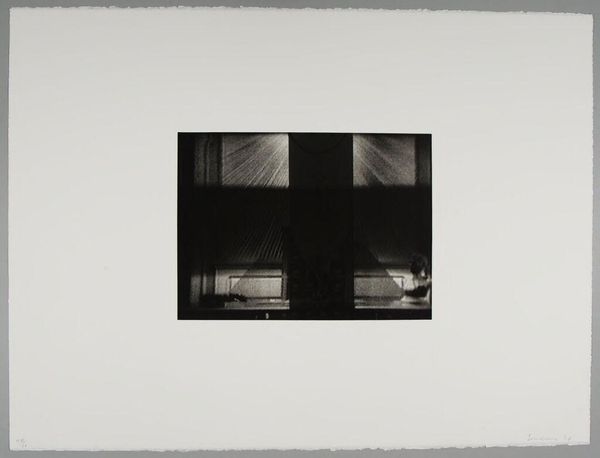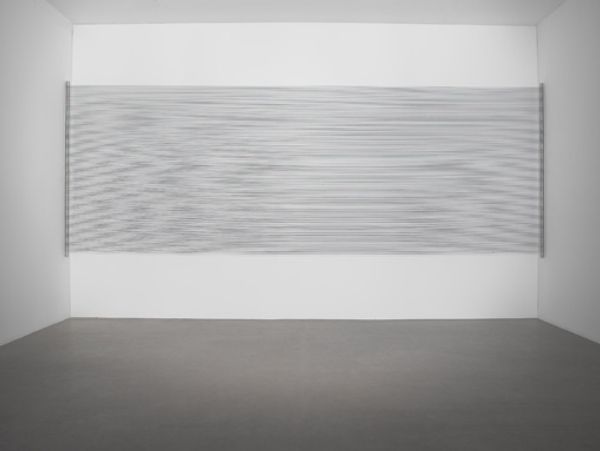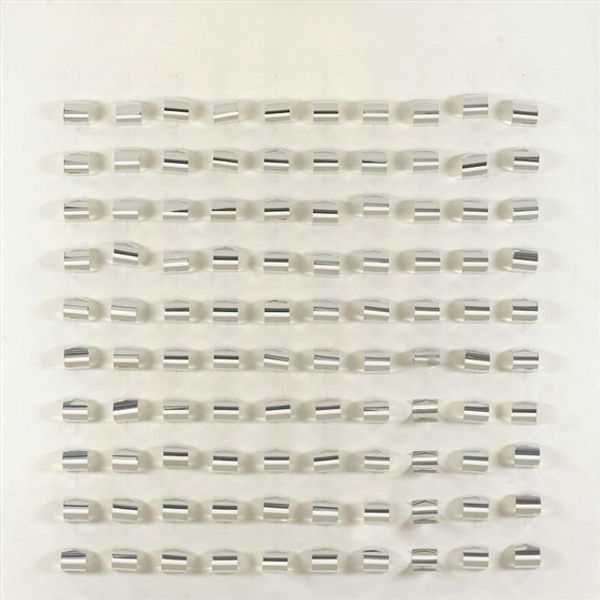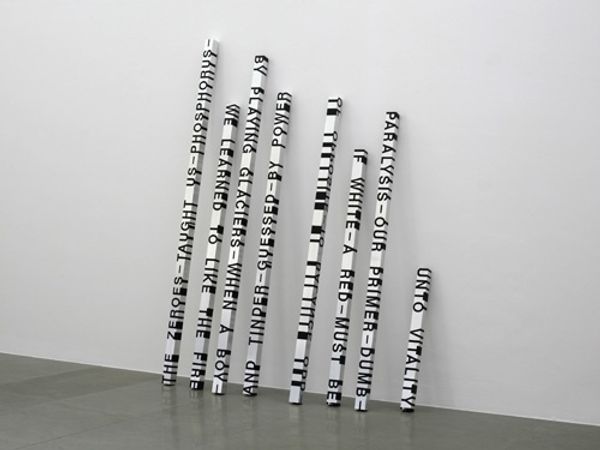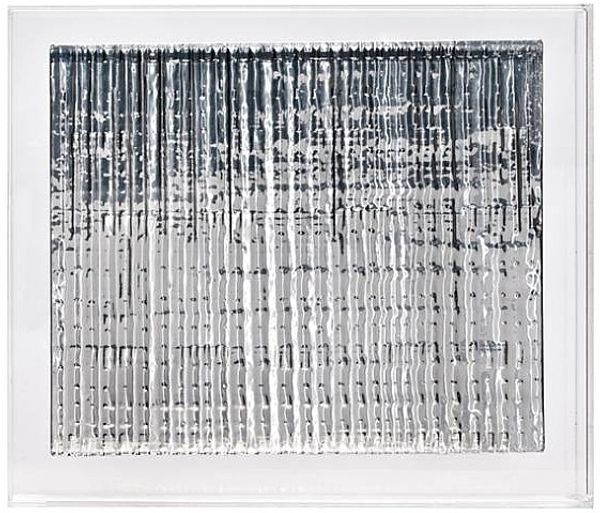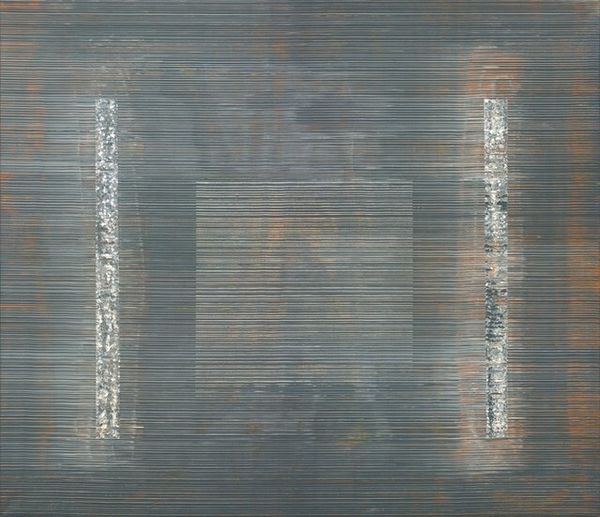
mixed-media
#
abstract-expressionism
#
abstract expressionism
#
mixed-media
#
conceptual-art
#
minimalism
#
form
#
abstract form
#
abstraction
#
line
#
abstract art
Copyright: Eva Hesse,Fair Use
Editor: So, here we have Eva Hesse's "Metronomic Irregularity II" from 1966, created using mixed media. It’s three dark squares connected by a mass of string... I'm immediately struck by the tension between order and chaos. The squares feel very controlled, but the threads connecting them are wild. What do you see in this piece? Curator: Formally, it's a fascinating investigation into the grid, a common structure in minimalist art. Hesse plays with its inherent rigidity by introducing this element of unpredictable, almost organic line. Consider the contrast: the hard edges of the squares versus the soft, pliable quality of the string. Notice also how the string itself becomes a sort of three-dimensional drawing, extending beyond the boundaries of the canvas. How does this manipulation of form and material affect your understanding? Editor: It makes me think about breaking free from constraints. The string seems to resist the squares, almost trying to escape their control. Curator: Precisely. The piece engages with ideas of repetition and variation. While the squares offer a repeated motif, the string introduces a unique irregularity each time. Are there elements in the arrangement of the string itself that capture your attention, from a formal standpoint? Editor: Well, some areas have a higher density of string, creating darker or lighter patches, like variations in texture. Curator: Indeed. These nuances highlight the work's engagement with materiality. It is an unconventional, somewhat vulnerable material to find in a gallery space. How does considering the work purely in terms of these formal elements—line, shape, texture, and composition—enrich or alter your initial reading? Editor: It deepens my understanding of how Hesse creates meaning, using these basic elements to evoke deeper ideas about structure, freedom, and maybe even a little bit of humor! Curator: Absolutely. Looking closely at form reveals so much about Hesse’s artistic intent, as she pushes against traditional boundaries.
Comments
No comments
Be the first to comment and join the conversation on the ultimate creative platform.
